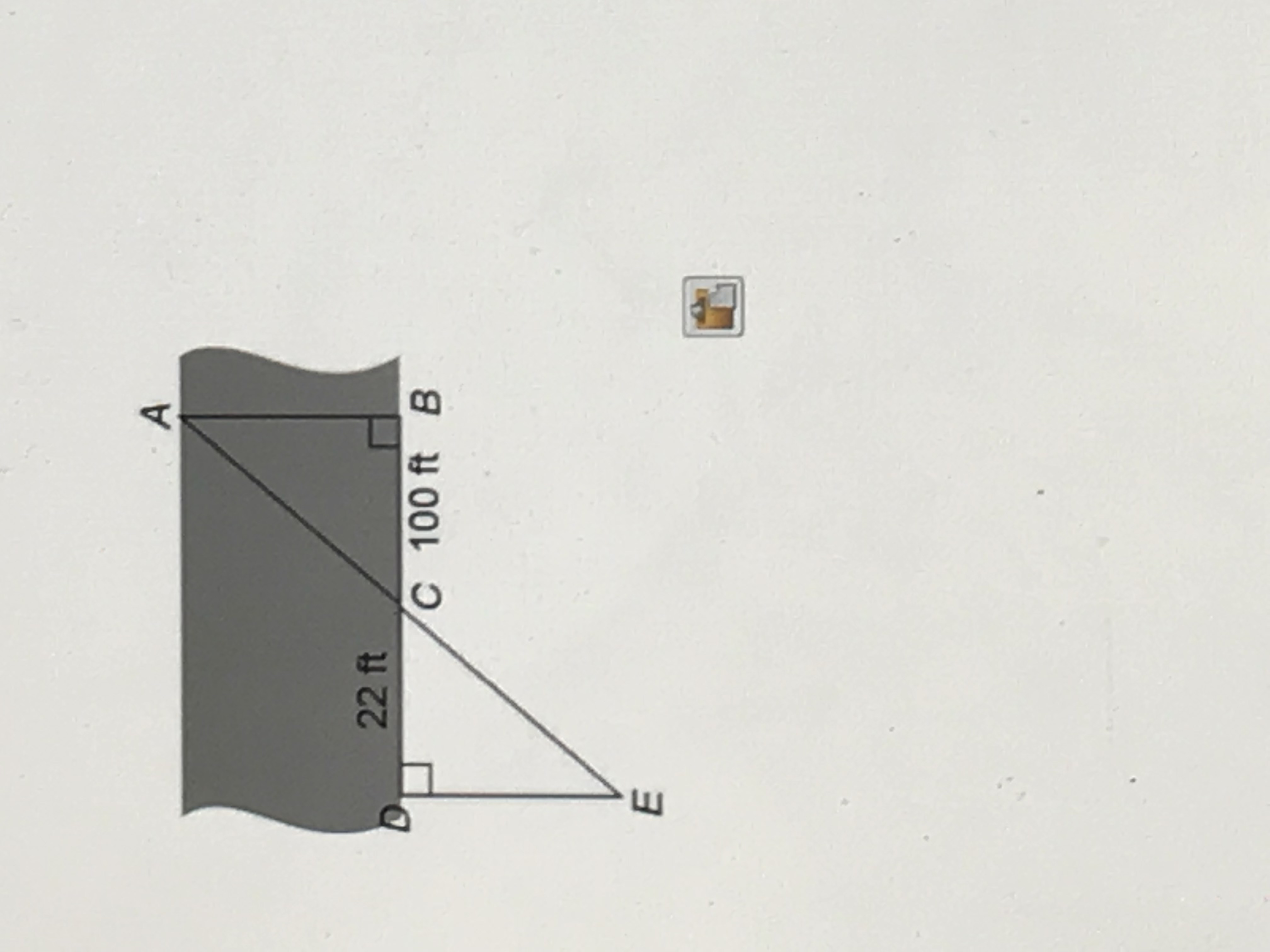(a) Can Kayla conclude that and are similar? Why or why not? HELP PLEASE

1. Kayla wants to find the width, AB, of a river. She walks along the edge of the river 100 ft and marks point C. Then she walks 22 ft further and marks point D. She turns 90° and walks until her location, point A, and point C are collinear. She marks point E at this location, as shown.
(a) Can Kayla conclude that and are similar? Why or why not?
(b) Suppose DE = 32 ft. What can Kayla conclude about the width of the river? Explain.
Answer:
1. Kayla wants to find the width, AB, of a river. She walks along the edge of the river 100 ft and marks point C. Then she walks 22 ft further and marks point D. She turns 90° and walks until her location, point A, and point C are collinear. She marks point E at this location, as shown.
(a) Can Kayla conclude that and are similar? Why or why not?
(b) Suppose DE = 32 ft. What can Kayla conclude about the width of the river? Explain.
Answer:
1 Answer
See below:
Explanation:
Let's solve
So, we can conclude that the triangles are similar by AA Similarity Theorem.
Substitute in the lengths they have given:
Cross multiply and solve:
So the length of the river (

